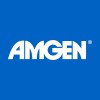Single-arm Trial to Evaluate the Role of the Immune Response to Talimogene Laherparepvec in Unresected Melanoma (TVEC-325)
Unresected Stage IIIb to IVM1c Melanoma

About this trial
This is an interventional treatment trial for Unresected Stage IIIb to IVM1c Melanoma focused on measuring T-VEC, CD8+ cell density, objective response rate, unresected, Melanoma
Eligibility Criteria
Inclusion Criteria:
- Provided informed consent prior to initiation of any study-specific activities/procedures
- Subject with stage IIIB to IVM1c melanoma for whom surgery is not recommended
- Candidate for intralesional therapy
- Measurable disease with greatest diameter ≥ 10 mm
- Eastern Cooperative Oncology Group (ECOG) performance status of 0 or 1
- Adequate organ function
Other Inclusion Criteria May Apply
Exclusion Criteria:
- Clinically active cerebral metastases.
- Bone metastases
- Primary ocular or mucosal melanoma
- Active herpetic skin lesions or prior complications of herpes simplex virus type 1 (HSV-1) infection (eg, herpetic keratitis or encephalitis)
- Requires intermittent or chronic systemic (intravenous or oral) treatment with an antiherpetic drug (eg, acyclovir), other than intermittent topical use
- Female subject is pregnant or breast-feeding, or planning to become pregnant during study treatment and through 3 months after the last dose of talimogene laherparepvec
- Female subject of childbearing potential who is unwilling to use acceptable method(s) of effective contraception
Other Exclusion Criteria May Apply
Sites / Locations
- Research Site
- Research Site
- Research Site
- Research Site
- Research Site
- Research Site
- Research Site
- Research Site
- Research Site
- Research Site
- Research Site
- Research Site
- Research Site
- Research Site
- Research Site
- Research Site
- Research Site
- Research Site
- Research Site
- Research Site
- Research Site
- Research Site
- Research Site
- Research Site
- Research Site
- Research Site
- Research Site
- Research Site
- Research Site
- Research Site
- Research Site
- Research Site
- Research Site
- Research Site
- Research Site
- Research Site
- Research Site
- Research Site
- Research Site
- Research Site
- Research Site
- Research Site
Arms of the Study
Arm 1
Experimental
Talimogene Laherparepvec
Talimogene laherparepvec was administered by intralesional injection into injectable cutaneous, subcutaneous, and nodal lesions at an initial dose of 10⁶ plaque-forming units (PFU) per mL on day 1 followed by a dose of 10⁸ PFU/mL 21 days after the initial dose and every 14 days thereafter. Participants were treated with talimogene laherparepvec until they achieved a complete response, all injectable tumors had disappeared, clinically significant (resulting in clinical deterioration or requiring change of therapy) disease progression beyond 6 months of treatment, per modified World Health Organization (WHO) response criteria, or intolerance of study treatment, whichever occurred first.
Outcomes
Primary Outcome Measures
Secondary Outcome Measures
Full Information
1. Study Identification
2. Study Status
3. Sponsor/Collaborators
4. Oversight
5. Study Description
6. Conditions and Keywords
7. Study Design
8. Arms, Groups, and Interventions
10. Eligibility
12. IPD Sharing Statement
Learn more about this trial
